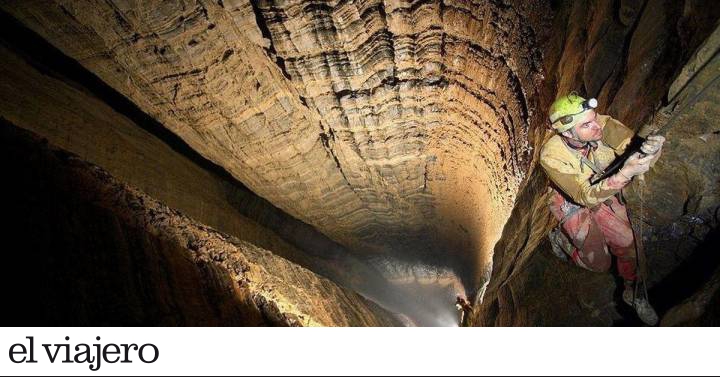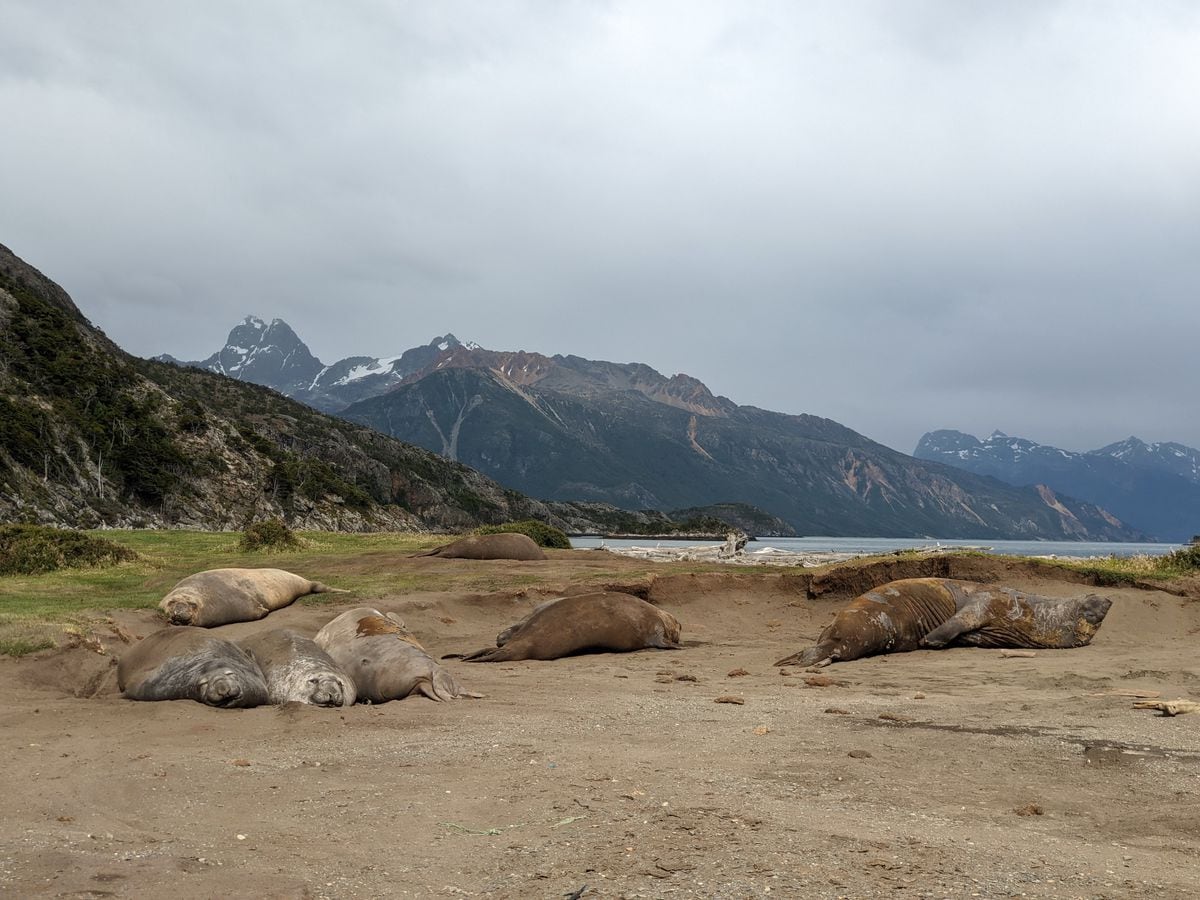It is the bottom of the earth, the basement of the planet we inhabit.
Well into the 21st century, with various sophisticated artifacts sending live color videos from Mars, the subsoil we step on is an absolute unknown.
It is only accessible to cavers, romantic heirs to the best exploratory tradition who, paying out of pocket and using their free time, have managed to pass the chilling figure of -2,000 meters deep.
Two kilometers towards the center of a stone ball (Earth) that is 6,371 kilometers in radius.
If we compare that with the figures of the sea, whose maximum depth is 11,050 meters in the Mariana Trench, it is as if all divers, submarines and bathyscaphs of all time had not been able to descend below 0.003 meters deep.
The modern history of underground exploration begins in 1895 when the French Édouard-Alfred Martel founded the Speleological Society of France.
And it reaches its peak in the mid-20th century when Krùbera-Voronya (-2,197 meters) is discovered and started to be explored, which was for a long time the deepest known chasm (today it is the second, by only 15 meters), but the first in which a milestone was achieved: descending to more than 2,000 meters.
A figure that the uninitiated reader in caving may think is small.
But believe me and I know what I'm talking about: descending through gigantic wells of 300 meters of absolute vertical, crossing chaos of rocks, avoiding waterfalls of frozen water, underground rivers, narrow galleries through which hardly a person can fit, diving in flooded galleries and passing several weeks in a row inside a cavern, in absolute darkness, totally soaked and with 100% humidity ... all this at 2,000 meters of depth, it is a physical and mental feat only suitable for super men and super women;
far more demanding than setting foot on top of most eight thousand Himalayas.
'Krúbera-Voronya, the conquest of the center of the earth', cover of the book published by Almuzara.
Krùbera-Voronya, the conquest of the center of the earth
, a book recently published by Almuzara and signed by journalist Gonzalo Núñez, tells the story of the exploration of this chasm, the Everest of cavers.
Krúbera is in the Caucasus, in a valley of the Arabika massif, in Abkhazia, a territory belonging to Georgia but today in rebellion and self-proclaimed independent.
The possibilities that this limestone mountain housed large cavities have been known since Édouard-Alfred Martel explored it in 1905. But it was not until 1960 that a group of Soviet cavers discovered the entrance to a chasm in the Orto-Balagán valley that suspected large possibilities.
They named it in honor of the father of Russian caving, the geologist and karstologist Aleksandr Krúber.
But they only managed to descend to -180 meters.
The disintegration of the USSR and the subsequent civil war of Abkhaz and Georgians made it impossible for cavers to return to the area.
Furthermore, in the 1980s, depths of -1,000 meters were already being explored in the Alps and other areas of the Caucasus.
In fact, at that time the deepest chasm in the world was the Franco-Spanish Piedra de San Martín, whose mouth is in Belagua, a Navarrese territory close to the French border, but which unfolds most of its vertical and horizontal path under the ground. French.
It is -1,410 meters.
But in the early 1980s, another Soviet karst specialist, Aleksandr Klimchuk, explored the area scientifically again.
He used chemical tracers that were dropped into the water that entered through the mouth of several chasms of the Arabika massif and found that days later they appeared at ground zero by the Black Sea.
This showed that in the massif there was a pack of limestone (the rock in which weathering caused by rainwater creates chasms and caverns) more than 2,500 meters thick.
The possibilities existed, you just had to find a front door.
That door was opened in 1999, when a Ukrainian team located a side window in the final shaft of the Krùbera that gave way to another series of verticals that reached -700.
The way was open.
Sergio García-Dils (right), with the adventurer Jesús Calleja during the filming of 'Extreme Challenge' in Krùbera-Voronya, in 2013 jesuscalleja.es
Krùbera-Voronya's
narration
, the conquest of the center of the earth
, began in the summer of 2000 with an international team that reached the mouth of the chasm when it had explored -1,200 meters.
The common thread of the text is the Sevillian Sergio García-Dils, one of the best Spanish cavers of all time, who has been collaborating with international teams for decades and has been part of the most successful expeditions in Krùbera and other chasms of the Caucasus.
Throughout 180 pages, Núñez reels in a didactic way and close to those not initiated in this practice, the details of such an exploration, the triumphs and failures, the progress meter by meter in search of the depth record and the tremendous difficulties that supposes an adventure to the limit like this.
To reach these -2,197 meters, numerous vertical wells have to be overcome, some of them, such as those at level -1,200, with waterfalls of icy waters.
Circumventing the Gatera del Infierno at -1,640 meters, a tube 40 centimeters wide and 300 meters long through which one person can barely fit and that, if it rains on the surface, it can be flooded at any time.
The cavers and all the abundant and heavy technical material necessary to advance must pass through it.
If a rescue operation in a chasm is already difficult, after this point there is no possible rescue.
And then, at 2,080 meters of depth, four siphons arrive: flooded galleries that must be crossed diving with bottles and cave diving equipment.
Imagine yourself at that depth and having to cross a narrow corridor flooded with dark and cold waters, without really knowing what is on the other side, and without being able to fail at anything because no one is going to come to help you.
Do you know why I said that this is only for very special people with nerves of steel?
Stephen Álvarez, a
National Geographic
photographer
who entered Krùbera to document the deepest cave in the world for the magazine and who retired at -700 meters, defined it perfectly: “Outside is the most beautiful place in the world;
inside, a real hell ”.
Krùbera-Voronya, the conquest of the center of the earth
, Gonzalo Núñez, Editorial Almuzara, 2021. 19.95 euros
Follow me also on Spotify, Instagram, Youtube and Twitter.
You can listen to me every Friday at 7.40pm with Carles Francino on 'La Ventana', on the SER channel.














